In the scenario below, is Java async-profiler the right tool to see where's time spent when comparing performance of ArrayBlockingQueue and LinkedBlockingQueue?
On my machine, total execution time of ABQ is always 25% faster than LBQ when sharing 50M entries between a consumer and a producer. Flame graphs of both are "pretty much" same except LBQ one shows only a handful of samples from JVM object allocation code but this wouldn't jusify 25% increase. As expected, TLAB allocation in LBQ is much higher.
I was wondering, how can I see which activity (be it code or hardware) is taking the time?
Runner:
import java.util.*;
import java.util.concurrent.ArrayBlockingQueue;
import java.util.concurrent.BlockingQueue;
import java.util.concurrent.LinkedBlockingQueue;
public class Runner {
public static void main(String[] args) throws InterruptedException {
int size = 50_000_000;
BlockingQueue<Long> queue = new LinkedBlockingQueue<>(size);
Producer producer = new Producer(queue, size);
Thread t = new Thread(producer);
t.setName("ProducerItIs");
Consumer consumer = new Consumer(queue, size);
Thread t2 = new Thread(consumer);
t2.setName("ConsumerItIs");
t.start();
t2.start();
Thread.sleep(8000);
System.out.println("done");
queue.forEach(System.out::println);
System.out.println(queue.size());
}
}
Producer:
import java.util.Queue;
import java.util.Random;
import java.util.concurrent.BlockingQueue;
public class Producer implements Runnable {
public Producer(BlockingQueue<Long> blockingQueue, int size) {
this.queue = blockingQueue;
this.size = size;
}
private final BlockingQueue<Long> queue;
private final int size;
public void run() {
System.out.println("Started to produce...");
long nanos = System.nanoTime();
Long ii = (long) new Random().nextInt();
for (int j = 0; j < size; j++) {
queue.add(ii);
}
System.out.println("producer Time taken :" + ((System.nanoTime() - nanos) / 1e6));
}
}
Consumer:
import java.util.concurrent.BlockingQueue;
public class Consumer implements Runnable {
private final BlockingQueue<Long> blockingQueue;
private final int size;
private Long value;
public Consumer(BlockingQueue<Long> blockingQueue, int size) {
this.blockingQueue = blockingQueue;
this.size = size;
}
public void run() {
long nanos = System.nanoTime();
System.out.println("Starting to consume...");
int i = 1;
try {
while (true) {
value = blockingQueue.take();
i++;
if (i >= size) {
break;
}
}
System.out.println("Consumer Time taken :" + ((System.nanoTime() - nanos)/1e6));
} catch (Exception exp) {
System.out.println(exp);
}
}
public long getValue() {
return value;
}
}
With LinkedListBlockedQueue: Black arrow showing samples captured for allocations

